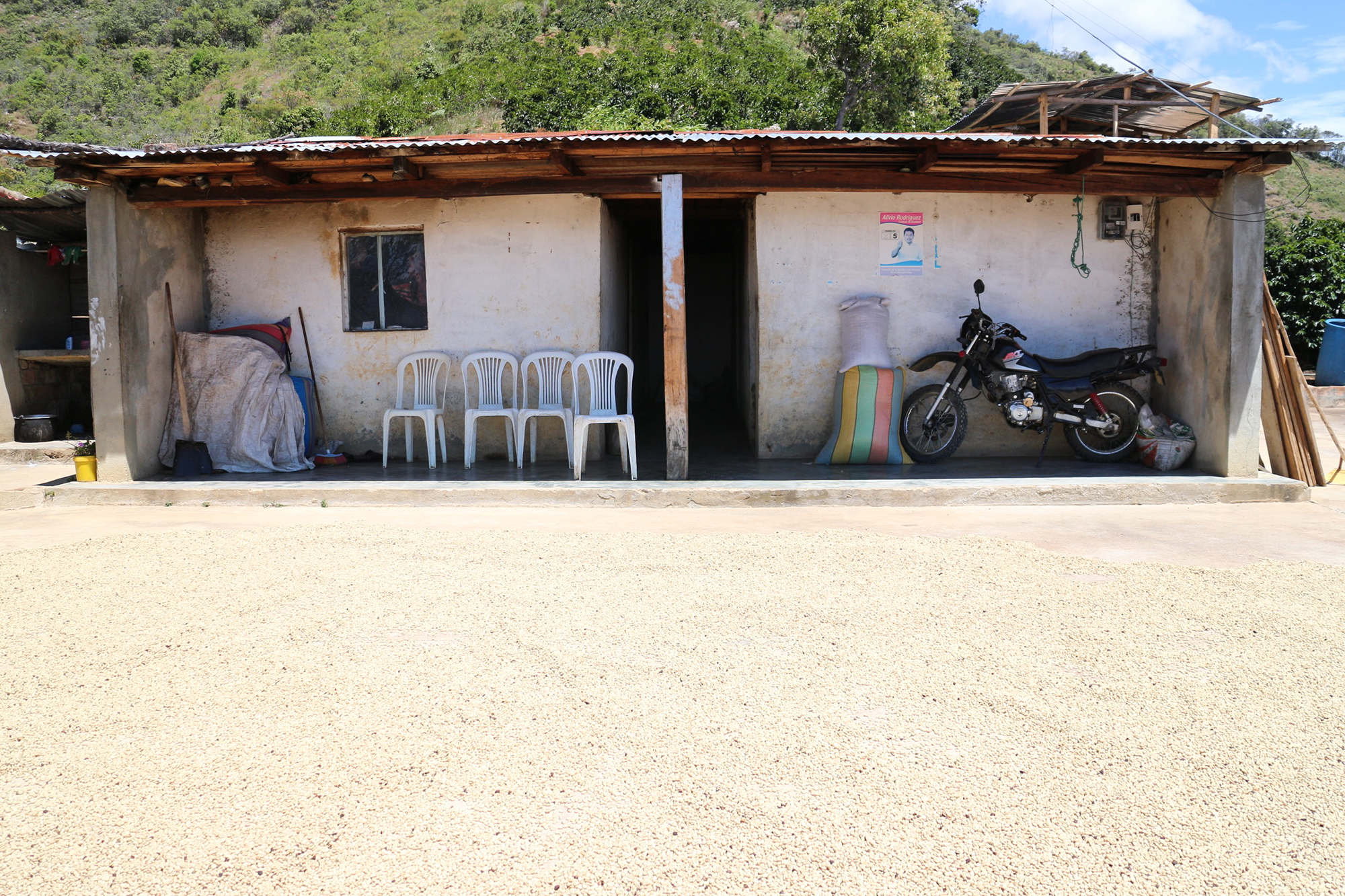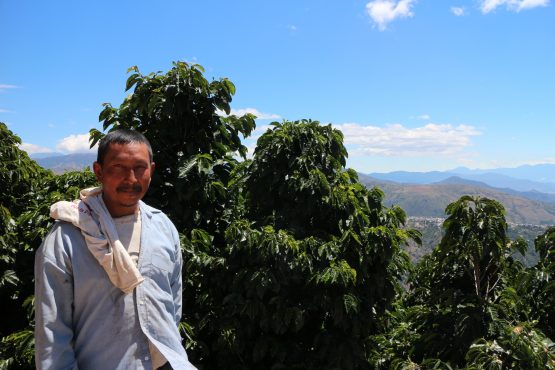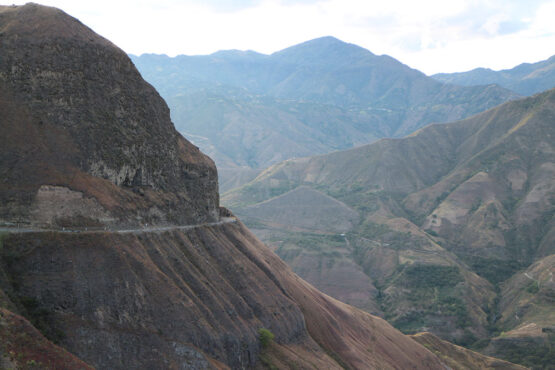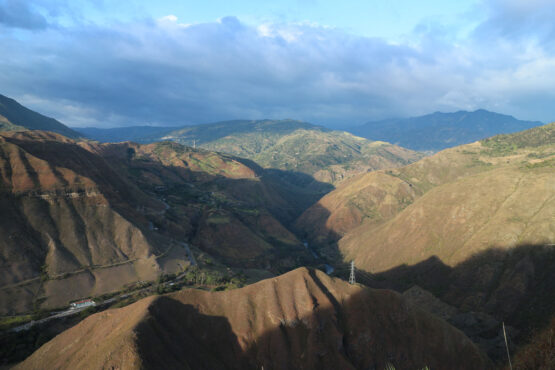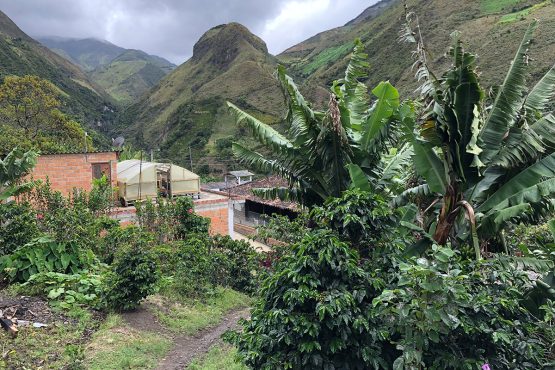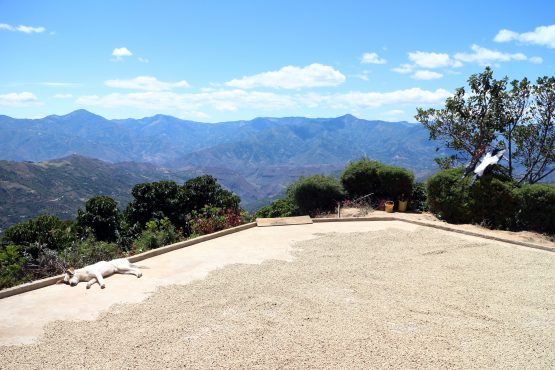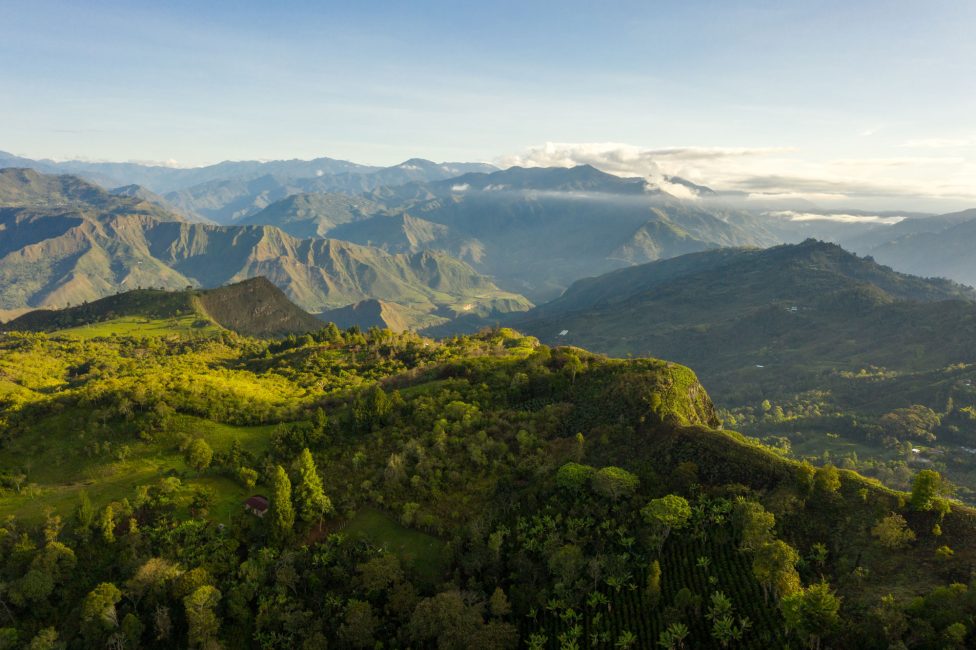Bella Vista
2022 tasting notes TBC.
This coffee was produced by Ulpiano Rodríguez, on his small farm Bella Vista (which translates to ‘Beautiful View’ in Spanish). Located in the municipality of Buesaco, in Colombia’s state of Nariño, this three-hectare plot reaches as high as coffee can be planted in the steep hills surrounding the town, at 2,170 metres above sea level. The region is strikingly mountainous and boasts no fewer than five volcanoes: Chiles, Cumbal, Azufral, Doña Juana, and Galeras.
Ulpiano shares a life story with many other coffee producers working in the region. Though he is originally from Nariño, he was forced to flee his hometown in the 90s, when the armed conflict between the left-leaning FARC guerrillas and the government forces was at its peak. Ulpiano and his brothers moved to the neighbouring state of Putumayo, which at the time was experiencing an economic bonanza due to burgeoning coca production. He worked there for several years as a coca picker (or ‘raspachin’ as they are called in Colombia), until he and his family were again forced to move as the conflict spread further. This meant that his family was forced to move back to Nariño during one of the most violent times in Colombia’s history.
Ulpiano and his brothers resettled in the family property, and split it up amongst themselves. Starting from scratch with what little he had been able to save, he built his farm from nothing, and now has some 12,000 beautiful Caturra and Colombia trees. He sees specialty coffee production, finally, as a way of providing a sustainable income for his family.
ABOUT BUESACO
For a long period in the 1990s and early 2000s, Buesaco was incredibly hard hit by violence, as much of the region was under the control of the FARC guerrillas. The elevation in much of the municipality was ideal for growing opium poppy plants and coca and, as the government did not have a heavy presence in rural Nariño, it was a perfect centre of operations for illegal groups. It wasn’t until the 2010s that guerrillas were forced out of Buesaco, and the town began its transformation into one of Colombia’s best-regarded coffee-growing regions. Since then, many coffees grown here have performed exceptionally well in Colombia’s Cup of Excellence competition. The consistency of these results made it clear to many growers from the region that their coffee had the potential to be sold into the specialty market, and that they had the opportunity to seek greater premiums than they were receiving through other certification schemes.
Today, specialty coffee plays a very important role in making Buesaco prosperous, and in ensuring its future is one of peace and not of recurrent conflict. In 2013, a small group of 17 growers formed the first regional association, called Grupo Empresarial Buesaco. With the assistance of the local technical school, group members organised themselves into a small operation with the aim of buying, warehousing and commercialising high quality coffee. The association grew very quickly and within four years they were able to form an offshoot group, Alianza Café, to focus solely on specialty-grade coffee. Its members are committed to running the association with transparency and with the final goal of improving the income of the nearly 400 growers that participate in their programs.
ABOUT NARIÑO
Nariño is located in Southwest Colombia, bordering Ecuador. Most of the forty thousand coffee producers in Nariño are incredibly small (averaging less than 2 hectares each) and are often located in very remote areas. Coffee in Nariño is grown at elevations that reach 2,200 metres above sea level, making it some of highest grown coffee in the world. Typically, it is very difficult to produce coffee at such high altitudes (as many plants suffer from ‘die back’) – however, Nariño’s proximity to the equatorial line and steep hills around the volcanoes provide a great angle for sun exposure, creating the right micro-climate for coffee plants to thrive. The high altitude of cultivation, combined with warm tropical days and cools nights, allows for slow maturation and development of the coffee cherries, giving time for concentrated sugars to develop in the fruit and resulting in a very unique, sweet, and complex cup profile.
Nariño typically has a wet season with periods of continuous rain, followed by a dry season. Because of this, there is only one flowering period a year and, therefore, a single harvest, usually in April – July (this is different to other parts of Colombia where two harvests are the norm). In order to survive, producers in Nariño must have other economic activities, which typically include harvesting and selling plantains, fique (a fiber used to make rope) and/or cuy (guinea pigs).
Our export partners for this coffee, Pergamino, have worked hard commercialise specialty-grade coffee throughout Nariño, and have uncovered some stunning coffees and very dedicated producers in the process. They work closely with the producers to give them feedback on their coffees (provided by Pergamino’s expert team of cuppers) and provide top up payments when the coffee is sold at a higher premium.
Head here to learn more about the work of Pergamino.
HOW THIS COFFEE WAS PROCESSED
The coffee in this lot was selectively hand-harvested, with most labour being provided by Ulpiano and his family. It was processed using the washed method at the farm’s ‘micro-beneficio’ (mill).
The coffee was pulped using a small manual or electric pulper, and then placed into a fermentation tank, where it was fermented for 24 hours and then washed using cold, fresh water from surrounding streams. Coffee was then graded by density in washing channels and washed again using clean water.
It was then carefully dried (over 10–18 days) on patios under the sun. Nariño is blessed with some of the best drying conditions in the country due to the micro-climate and high elevation of the region, providing lower relative humidity, more wind and more sunny days than other areas of the country.
Once dry, the coffee was delivered to Pergamino’s warehouse, where it was cupped and graded, and then rested in parchment until it was ready for export.
